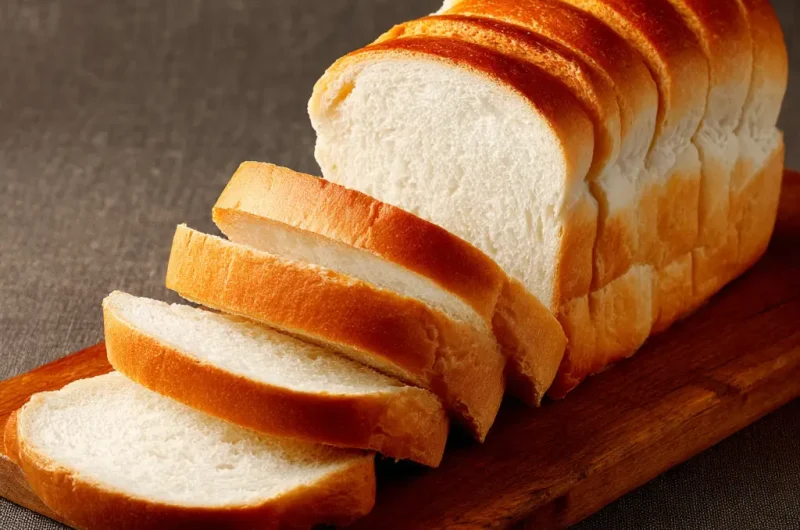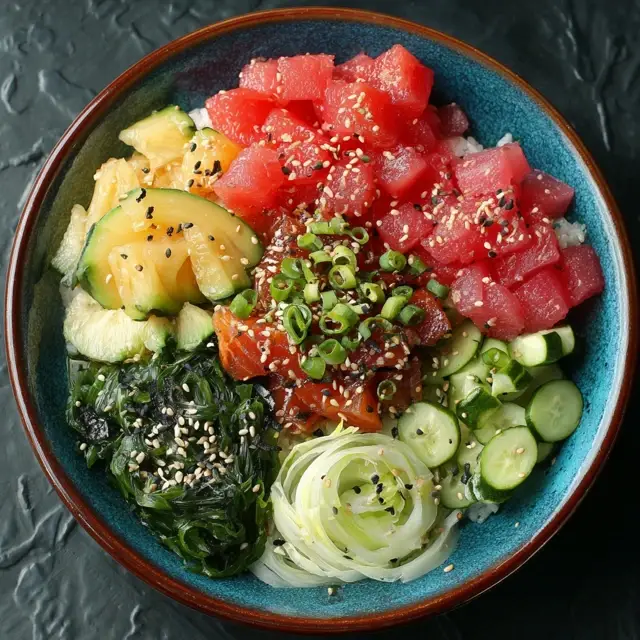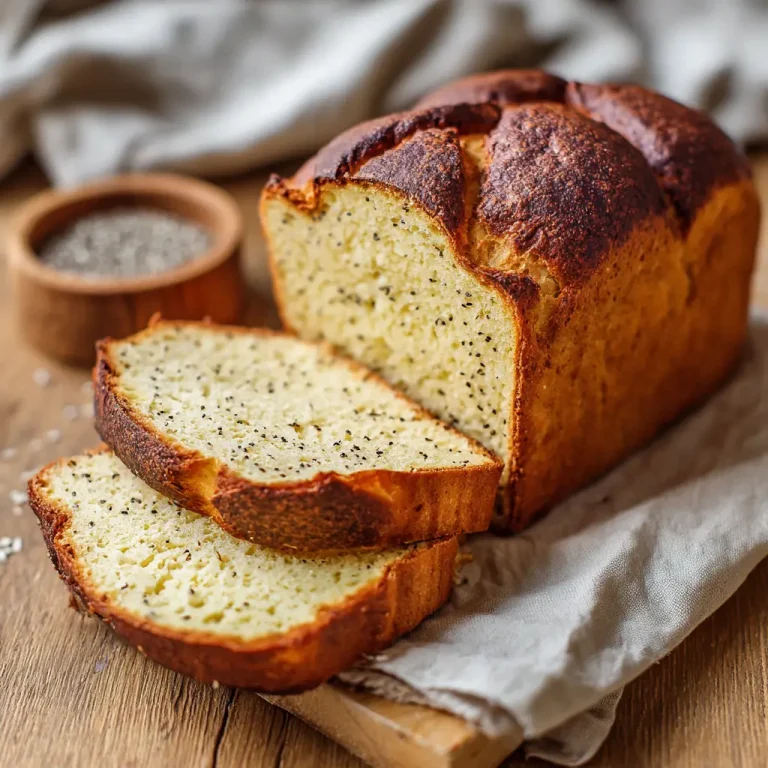White Bread Recipe | Soft, Homemade Loaf with Simple Ingredients
White bread has been a staple in kitchens around the world for centuries. Its soft texture, mild flavor, and versatility make it a favorite for sandwiches, toast, and countless recipes. Baking white bread at home allows you to enjoy fresh bread free from preservatives, with the satisfaction of creating something delicious from scratch. Whether you are a novice baker or someone looking to perfect the basics, understanding the art of making white bread opens up endless culinary possibilities.
Homemade white bread carries a unique charm. The aroma of freshly baked bread wafting through the house can transform any morning into something special. Unlike store-bought options, home-baked white bread provides control over ingredients, ensuring freshness and quality. This bread is ideal for everyday use and can be customized to suit personal preferences and dietary needs. From sandwiches packed with fillings to buttery toast enjoyed with jam, white bread’s role in the kitchen is both fundamental and delightful.
The process of making white bread involves simple ingredients, yet the results can be incredibly rewarding. Mastering the technique offers a sense of accomplishment and invites creativity in baking. Crisp crusts, soft crumbs, and just the right balance of sweetness come together to make every bite satisfying. Learning to bake white bread not only elevates your cooking skills but also brings a deeper appreciation for one of the world’s most beloved foods.
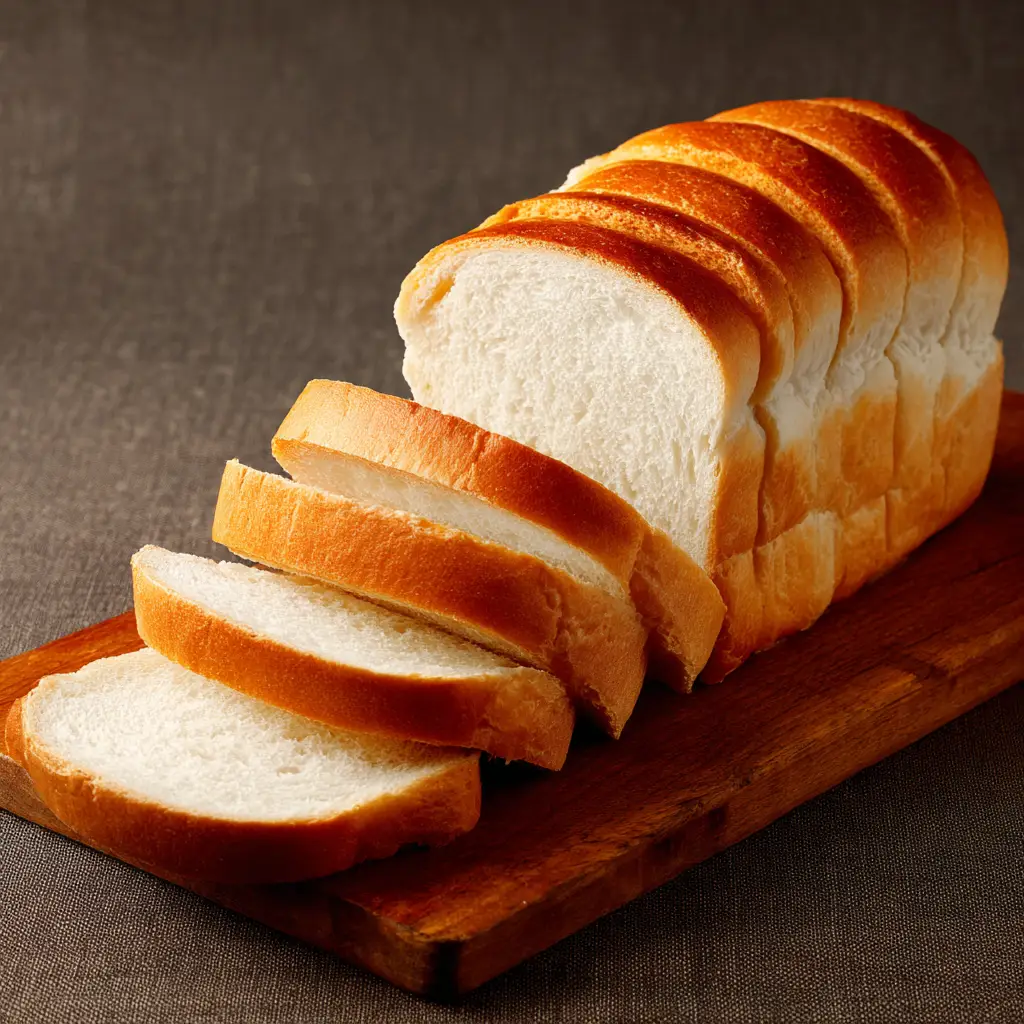
Ingredients Needed
Below is a clear list of ingredients required to make classic white bread, along with their approximate calorie counts per quantity used:
| Ingredient | Quantity | Calories |
|---|---|---|
| All-purpose flour | 4 cups (480 g) | 1740 |
| Warm water | 1 ½ cups (360 ml) | 0 |
| Active dry yeast | 2 ¼ teaspoons | 21 |
| Granulated sugar | 2 tablespoons | 96 |
| Salt | 1 ½ teaspoons | 0 |
| Unsalted butter | 2 tablespoons | 204 |
The total calorie count for the entire loaf will vary slightly depending on exact measurements but generally comes to about 2061 calories. Dividing this loaf into 12 slices means each slice contains roughly 170 calories, making it a reasonable choice for everyday consumption.
Step-by-Step Cooking Instructions
- Prepare the Yeast Mixture: Begin by dissolving the sugar in warm water. The water should be comfortably warm but not hot, ideally around 110 degrees Fahrenheit. Sprinkle the active dry yeast over the water and let it sit for about 5 to 10 minutes until it becomes frothy and bubbly. This step ensures the yeast is active and ready to work.
- Combine Dry Ingredients: In a large mixing bowl, sift together the all-purpose flour and salt. Mixing the dry ingredients well helps distribute the salt evenly, which is essential for flavor and yeast activity.You’ll also want to try Beef Sandwichesfor another tasty option.
- Mix Wet and Dry Ingredients: Pour the frothy yeast mixture into the bowl with flour. Add the softened unsalted butter. Stir with a wooden spoon or dough hook attachment until the dough starts coming together.
- Knead the Dough: Turn the dough out onto a floured surface and knead for 8 to 10 minutes until the dough is smooth, elastic, and slightly tacky but not sticky. Kneading develops gluten, giving the bread its structure.
- First Rise: Lightly grease a large bowl with oil or butter. Place the dough in the bowl, turning it to coat all sides. Cover the bowl with a clean kitchen towel or plastic wrap and let it rise in a warm, draft-free spot for about 1 to 1.5 hours, or until it doubles in size.
- Shape the Dough: Punch down the dough to release trapped air. Turn it out again onto a lightly floured surface. Shape the dough into a loaf by rolling or folding it tightly, then place it into a greased 9 by 5-inch loaf pan.
- Second Rise: Cover the loaf pan with a towel and let the dough rise again for 30 to 45 minutes, until it rises just above the edge of the pan.
- Bake the Bread: Preheat the oven to 375 degrees Fahrenheit. Bake the loaf for 30 to 35 minutes until the crust is golden brown and the bread sounds hollow when tapped. If the crust browns too quickly, tent it loosely with foil.
- Cool Completely: Remove the bread from the oven and turn it out of the pan onto a wire rack. Allow it to cool completely before slicing to prevent a gummy texture.
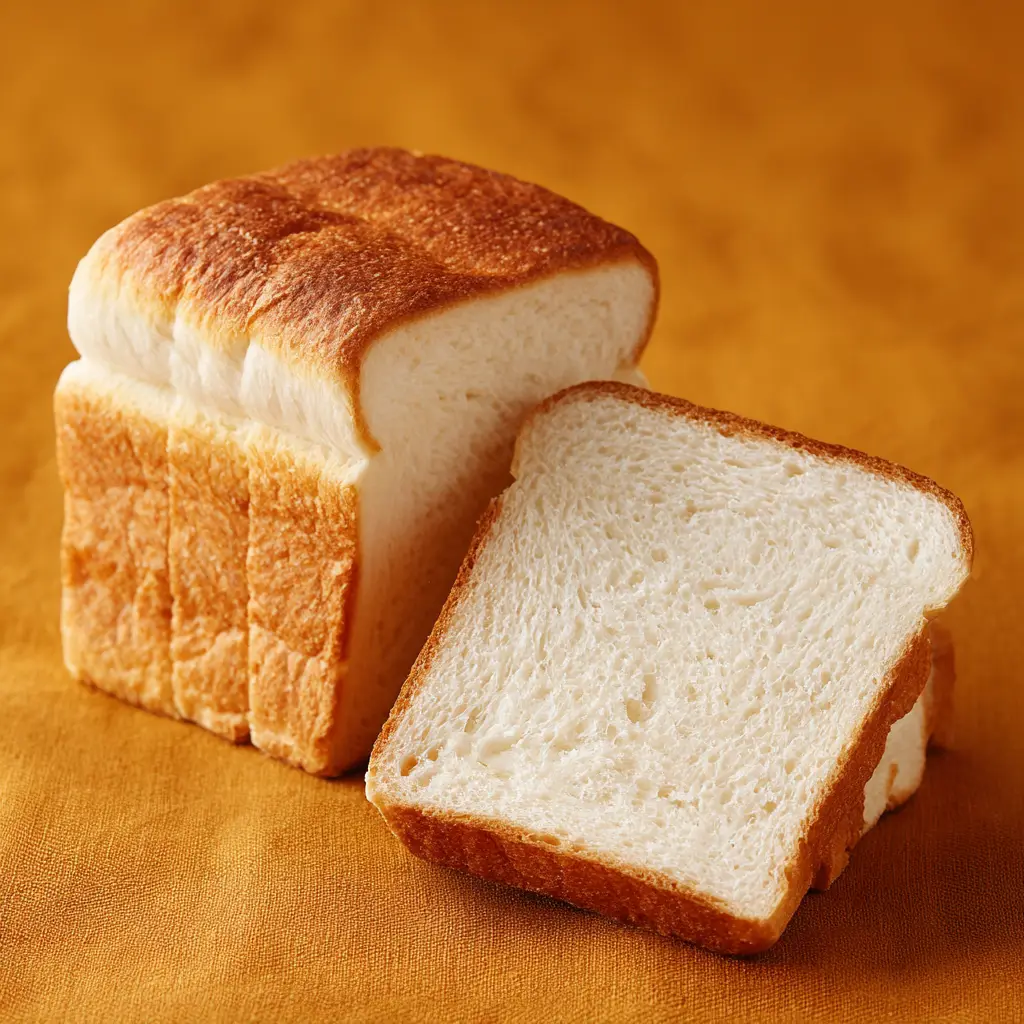
Tips for Customizing the Recipe
White bread can be adapted in many ways to suit different tastes and dietary needs. Adding whole wheat flour in place of some all-purpose flour introduces more fiber and a nuttier flavor. Experimenting with herbs like rosemary or thyme folded into the dough before baking adds a delightful aroma and complexity.
For those who prefer a slightly sweet bread, incorporating a tablespoon of honey or molasses can enrich the flavor. To achieve a crustier loaf, bake on a preheated baking stone or place a pan of water in the oven to create steam during baking. This mimics traditional bakery techniques.
Adjusting the fat content by substituting butter with olive oil creates a softer crumb with a subtle richness. Including seeds such as sesame, poppy, or sunflower on the crust before baking adds texture and a nutritional boost. Each of these customizations retains the fundamental character of white bread while making it uniquely yours.
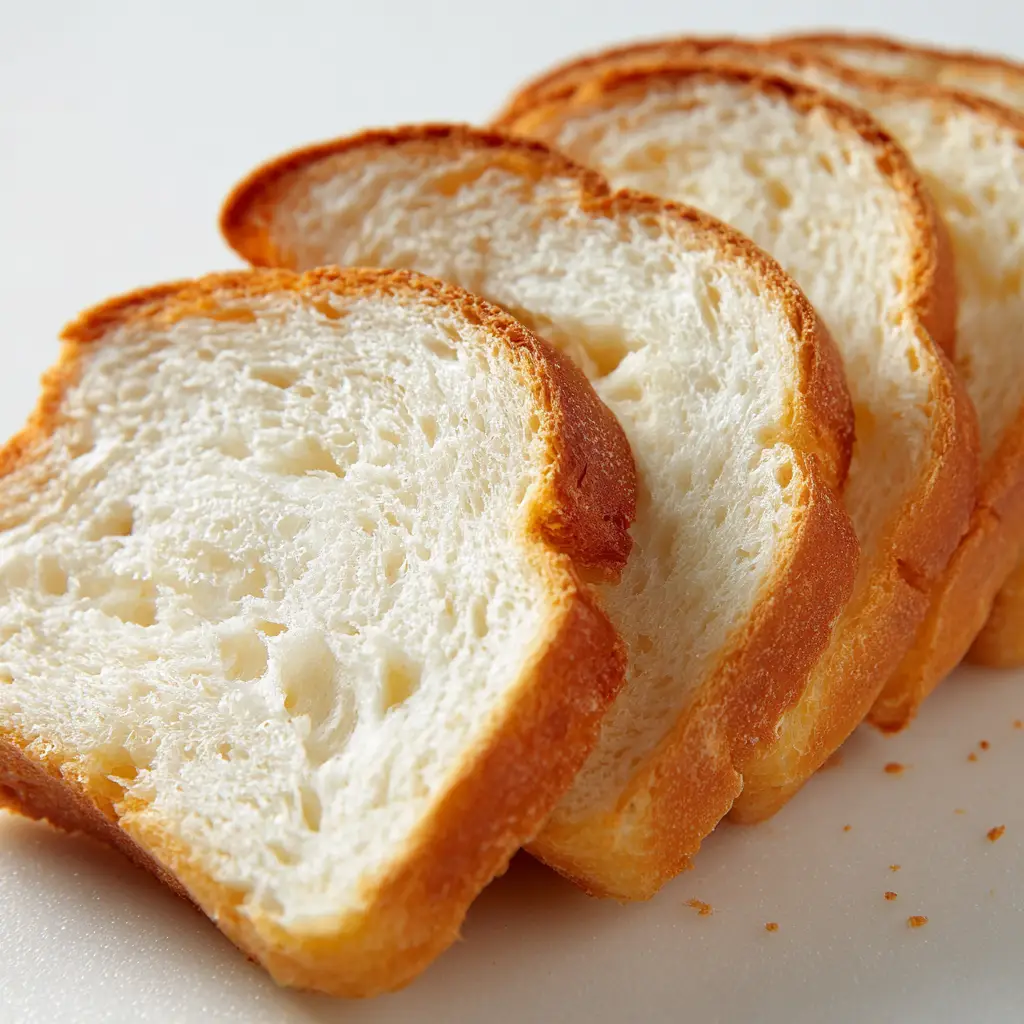
Nutritional Information
White bread primarily provides carbohydrates, which serve as the body’s main energy source. A single slice contains about 15 grams of carbohydrates, 3 grams of protein, and less than 1 gram of fat. The presence of refined flour means it has a moderate glycemic index, so it is best enjoyed as part of a balanced diet.
Although white bread lacks the fiber content found in whole grain alternatives, its mild flavor and soft texture make it appealing to many. Homemade white bread without preservatives or additives offers a cleaner eating experience. Incorporating it into meals alongside vegetables, lean proteins, and healthy fats can create wholesome nutrition.
Serving Suggestions
The versatility of white bread allows it to complement a wide range of dishes. It is the perfect base for classic sandwiches such as grilled cheese, BLTs, or turkey and avocado. Toasting slices and spreading butter, jam, or honey creates a comforting breakfast or snack.
White bread also serves well as a side for soups and stews, soaking up rich broths and sauces. Cubed and toasted, it becomes croutons for salads or toppings for casseroles. For a fun twist, use white bread to make bread pudding or French toast, showcasing its ability to absorb flavors and maintain tenderness.
Pairing white bread with fresh vegetables and dips like hummus or spinach artichoke offers healthy snacking options. Whether as the main carbohydrate or an accompaniment, white bread remains a beloved kitchen staple.
White Bread Recipe | Soft, Homemade Loaf with Simple Ingredients
Course: Blog1
servings15
minutes35
minutes~170 kcal Ingredients: 4 cups (480 g) all-purpose flour 1 ½ cups (360 ml) warm water (around 110°F / 43°C) 2 ¼ teaspoons (1 packet) active dry yeast 2 tablespoons granulated sugar 1 ½ teaspoons salt 2 tablespoons unsalted butter, softened Directions: Activate Yeast In a small bowl, combine warm water and sugar. Sprinkle yeast over the top and let it sit for 5–10 minutes until frothy. Mix Dry Ingredients In a large mixing bowl, combine flour and salt. Stir to distribute evenly. Form the Dough Pour in the yeast mixture and add softened butter. Mix until the dough starts to form. Then knead on a lightly floured surface for 8–10 minutes until smooth and elastic. First Rise Place the dough in a greased bowl. Cover with a towel or plastic wrap. Let it rise in a warm place for 1 to 1.5 hours until doubled in size. Shape the Loaf Punch down the dough, then shape it into a loaf. Place in a greased 9×5-inch loaf pan. Second Rise Cover again and let rise for 30–45 minutes until it rises just above the pan. Bake Preheat oven to 375°F (190°C). Bake for 30–35 minutes until golden brown and the loaf sounds hollow when tapped. Cool and Serve Remove from pan and cool on a wire rack completely before slicing. Note: For best results, allow the bread to cool completely before slicing to prevent a gummy texture. If you want a softer crust, brush the top with melted butter right after baking. You can also swap out 1 cup of flour for whole wheat flour for added nutrition. This bread freezes well — just wrap tightly and store in the freezer for up to 3 months. Let me know if you'd like a printable version or want it styled for a blog platform like WordPress or Squarespace. Get smarter responses, upload fi
kcalIngredients
4 cups (480 g) all-purpose flour
1 ½ cups (360 ml) warm water (around 110°F / 43°C)
2 ¼ teaspoons (1 packet) active dry yeast
2 tablespoons granulated sugar
1 ½ teaspoons salt
2 tablespoons unsalted butter, softened
Directions
- Activate Yeast
- In a small bowl, combine warm water and sugar. Sprinkle yeast over the top and let it sit for 5–10 minutes until frothy.
- Mix Dry Ingredients
- In a large mixing bowl, combine flour and salt. Stir to distribute evenly.
- Form the Dough
- Pour in the yeast mixture and add softened butter. Mix until the dough starts to form. Then knead on a lightly floured surface for 8–10 minutes until smooth and elastic.
Recipe Video
Notes
- For best results, allow the bread to cool completely before slicing to prevent a gummy texture. If you want a softer crust, brush the top with melted butter right after baking. You can also swap out 1 cup of flour for whole wheat flour for added nutrition. This bread freezes well — just wrap tightly and store in the freezer for up to 3 months.
Frequently Asked Questions (FAQs)
Is homemade white bread healthier than store-bought?
Homemade white bread is generally healthier because it contains no preservatives or artificial additives. You control the ingredients, ensuring freshness and quality.
Can I use instant yeast instead of active dry yeast?
Yes, instant yeast can be used. Reduce the warm water slightly and mix the yeast directly with flour. Rising times may be faster.
How do I store white bread to keep it fresh?
Store bread in a paper bag or bread box at room temperature to maintain the crust. For longer storage, wrap it tightly and freeze for up to three months.
Can I make white bread without a loaf pan?
Absolutely. Shape the dough into a round boule and bake on a baking sheet or stone. Adjust baking time as needed for a different shape.
Is it possible to make white bread gluten-free?
Traditional white bread relies on gluten for structure, but gluten-free recipes use special flour blends and binders. These require different techniques and ingredients.
Conclusion
Baking white bread at home is both an art and a pleasure. The process connects you to a timeless tradition, rewarding patience and care with delicious results. Soft, fluffy, and versatile, white bread complements countless meals and elevates everyday eating. Whether fresh from the oven or toasted with your favorite topping, homemade white bread offers warmth and comfort in every slice.

